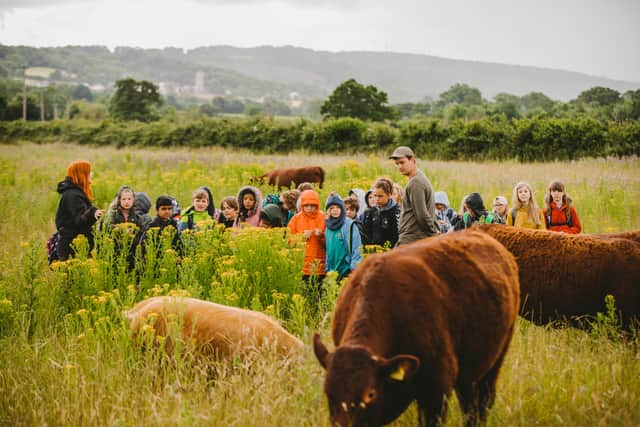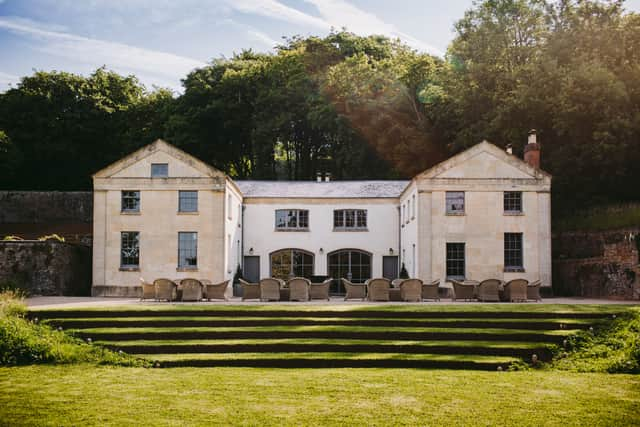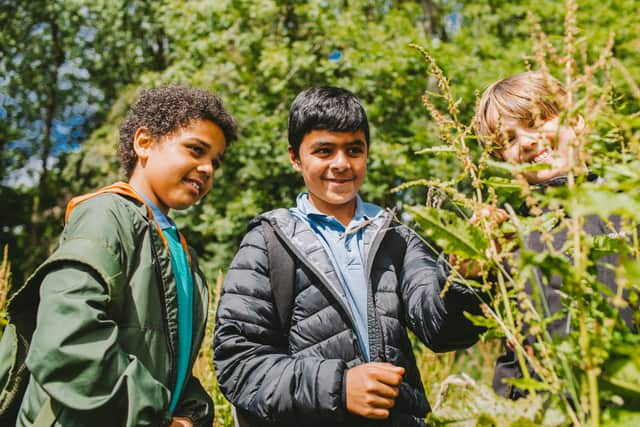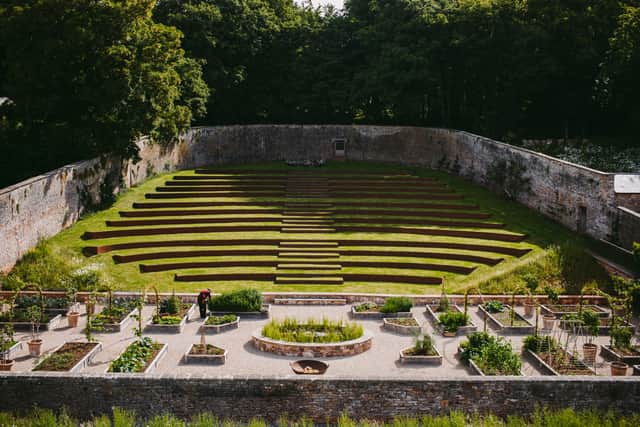The Belmont Estate: The Georgian estate helping us explore the natural world through conservation
and live on Freeview channel 276
Despite living in Bristol, chances are you’ve never heard of the Belmont Estate, a beautiful regenerative estate perched on the outskirts of the city and on a mission to restore climate, community and connection.
Over the last few years, big changes have been growing and happening at the Estate, and it’s likely you’re going to hear a lot more about what’s going on there in the future. So, with the Estate paving the way for the future, we take a look inside at how it all works.
Gil Martin, who has been the estate manager at Belmont for around four years now, has a background in nature conservation, farm and estate management, and rare breed food production.
Importantly, he’s interested in the commerciality of those things as well as the values that drive him to do his everyday work. “I’ve always worked in things that I’m passionate about and that help me deliver on my values,” he says.
“So often that almost deliberately turns its back on commerciality. In conservation, it’s a bit of rude work to talk about profit and the result is that conservation hasn’t really worked which is why we’re where we are in the world.”


As a result of this, Mr Martin is passionate about the commerciality of conservation, extensive rare breed and organic food production and the shared experience of this.
An opportunity to take on an estate and farm management situation whereby he can make all of these things overlap was an exciting prospect for Mr Martin.
“We can do the great work that I’m so passionate about and improve on nature, wildlife, and food production, and changing people’s behaviours and habits,” he says.
“And if we can prove that it is profitable, then other people can do it too. So, if you truly believe in something then demonstrating that it’s viable to the point that people copy you can be a very valuable thing.
“At Belmont, we’ve found a place where all of those things can come together so it’s tremendously exciting.”
But how did the Belmont Estate all come to be in the first place? I wonder what the history of the place is.


Belmont Estate has a really long history stretching way beyond 1760. Perched on a limestone bank looking out across to the Bristol Channel, it only has a small amount of soil so it was hard to farm in a conventional way in the days of traditional farming.
Mr Martin tells us how throughout history it’s always been about shared experiences and inviting guests over for walks through the romantic landscape - it’s always been about awe and wonder.
The Estate had various occupations over the next hundreds of years, including the family who built Tyntesfield next door, a place that somewhat kept Belmont in its shadow. Over the next few hundreds of years, it ended up with Lord Wraxhall before being broken up into lots of different bits.
“Ten years ago, the current owners came along, and bought a little bit of land on the Estate and gradually have bought more of the Estate to restore and put it all back together,” explains Mr Martin.
“In that time, the values of conservation, sustainability, education, community and inspiration became clearer and clearer so over the last few years we’ve been building a business that delivers on those values.”
Fast forward to today and the Georgian Estate is on a mission to restore and regenerate our natural world while providing opportunities for people to get closer to it.
The Estate functions across a few different sections now with a corporate partnerships side, educational aspect and a wider nature conservation project element - it’s a business ecosystem where no one bit exists without the other.


“We are near the beginning of our journey that we have spent 10 years of putting together, but we have built a new business to financially underpin and deliver on our values,” says Mr Martin.
“We are on a mission to reconnect people with food and nature, the natural world and with each other, and we are lucky to have this Estate to do that with.”
The corporate partnerships side of the business means that the Estate combines exclusive access to Belmont’s facilities, inspirational employee engagement within nature, and carbon offsetting opportunities for businesses to partner with.
“We’ve got a demonstration butchery, mini restaurant and meeting rooms, there’s some really cool stuff which is attractive for local businesses to come and use,” says Mr Martin.
“The partnership we develop with businesses allows them to use the facilities but gives them the opportunity to financially facilitate the education and the rewilding.”
The educational side is on a mission to bring about environmental and ecological restoration on a local and national scale.
They are building connections with the wider community, local schools and colleges to provide inspirational opportunities to get closer to nature, creating truly accessible educational resources and programmes for those without opportunity to get there alone.


The conservation projects are a crucial part of the business ecosystem, creating genuine positive impact, a resurgence in local biodiversity and improving community connection through volunteering and ecological surveying opportunities.
The nature conservation incorporates just shy of 150 acres of rewilded, formerly conventionally farmed landscape to allow nature’s natural processes back in. The Estate is fighting biodiversity loss.
The next phase is to re-wet the area, too, and let it act as a natural flood plain again. The Estate has free-range pigs, cattle, and Dartmoor ponies that roam the rewilding project.
“When you come, we really want to feed you the landscape, we want you to understand and ask questions about where your food comes from and we want you to benefit from the nature has to restore you emotionally, physically and intellectually,” says Mr Martin.
Mr Martin and the owners believe that disconnect with nature starts in childhood, so the free education programme aims to combat this.
“We have an education lead and she runs a series of events and opportunities for kids to get out in nature that we don’t charge for,” explains Mr Martin. “This year, we will have had 3,000 school children from all backgrounds coming to the Estate.”
A good example of where the Estate is looking to commercialise as well as raise awareness of the importance of sustainability and conservation is through the work they have done on the amphitheatre, which now holds up to 1000 for events.
“The walled garden from 1760 was beginning to fall down so we restored it and it still produces the fruit and vegetable that people eat when they come and visit us but it’s also a 1,000-seat amphitheatre, too,” explains Mr Martin.
“We have restored it, preserved it and breathed a new opportunity into it.”
